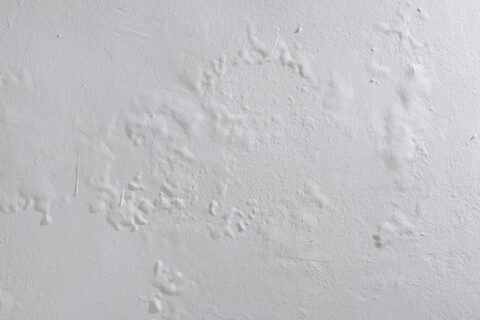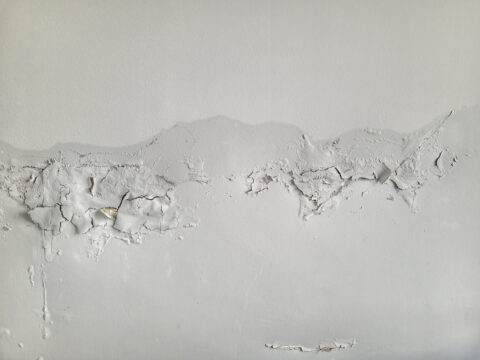 Water damage can have a serious impact on the structural elements of your home or business, and your walls are particularly susceptible to damage. Drywall, sheetrock and other wall materials tend to warp when they absorb water and excess moisture. Often, this warping can be subtle, making it easy to overlook the problem. However, warped walls can potentially impact the structural integrity of your building so it’s critical to have this problem addressed by a professional water damage restoration company as soon as you notice signs that your walls have warped.
Water damage can have a serious impact on the structural elements of your home or business, and your walls are particularly susceptible to damage. Drywall, sheetrock and other wall materials tend to warp when they absorb water and excess moisture. Often, this warping can be subtle, making it easy to overlook the problem. However, warped walls can potentially impact the structural integrity of your building so it’s critical to have this problem addressed by a professional water damage restoration company as soon as you notice signs that your walls have warped.
Common Causes of Warped Walls
While water damage is the primary reason why walls warp, there are many potential causes of this water damage. Some of the most common issues which lead to warped walls include:
- Leaky or Burst Pipes – Leaking pipes behind walls can cause the wall to be saturated over time. While burst pipes will often cause this saturation to occur quickly, even a slow leak can result in warped walls if it persists for an extended period of time.
- Appliance Leaks – Household appliances such as dishwashers, washing machines and water heaters can potentially develop leaks if they aren’t properly maintained or as they approach the end of their lifespan. These leaks can cause the wall to become saturated with moisture in the region surrounding the appliance.
- Flooding – Severe storms and plumbing failures can both result in significant flooding in your home or business. When this occurs, walls can become saturated with water, causing them to warp.
- Roof Leaks – Damage to your roof can result in leaks after a storm. Often, these leaks can go unnoticed for long periods of time, allowing the walls to soak up large quantities of moisture.
- Sewage Backup – Sewage backups from clogged drains can result in significant flooding with contaminated water, resulting in serious problems that extend beyond warped walls.
- Gutter Overflows – When gutters become clogged with leaves, ice and other debris, they may not drain properly. This can cause water to leak into your property and saturate your walls.
- Foundation Moisture – Excessive moisture near the foundation of your home or business can seep into the walls, resulting in warping and other structural damage.
- Damp Basements – Basements are common locations for moisture accumulation, causing your walls in this room to warp.
Signs that Walls Have Warped from Water Damage

- Visual Deformations – Your walls may appear to look bent, curved or distorted. You might also notice bulging areas or uneven surfaces on your walls.
- Texture Changes – The surface of your wall may feel spongy or soft when pressed gently. This is an indication that the drywall has become weakened after absorbing large quantities of moisture.
- Discoloration – Warped walls are often accompanied by discoloration from the water damage. This may manifest as yellow, brown or dark spots on the walls, as well as light brown rings in the area where the water damage has occurred.
- Paint or Wallpaper Issues – The water damage that causes your walls to warp will also typically result in peeling, bubbling or flaking paint and wallpaper.
- Cracks – Water damage can cause drywall to crack, creating sharp edges or jagged patterns in addition to warping.
- Musty Odors – A persistent musty smell near your wall is often a sign that there is a hidden leak and potential mold growth behind the wall.
- Visible Moisture – In severe instances, you might see water droplets on the wall surface or pooling near the base of the wall in addition to a warped appearance.
Any of these signs indicate a potentially serious water damage problem which must be addressed immediately. It’s best to contact an experienced water damage restoration company who can identify the source of the water and make all necessary repairs to not only restore your property to its original condition, but also prevent the development of more serious problems down the road.
How Do I Know if Warped Walls Are Affecting the Structural Integrity of My Property?
The best way to determine whether warped walls have impacted the structural integrity of your home or business is to work with a professional water damage restoration company who can assess the full extent of the damage to your walls. But you can also conduct a preliminary inspection of the walls yourself to get a sense of how serious the problem may be.
When inspecting warped walls, be on the lookout for:
- Cracks wider than 1/8 inch or that appear to be getting larger
- Diagonal or stair-step cracks, which often indicate foundation issues
- Walls that bow, lean or rotate
- Gaps between walls and ceilings or floors, which can often be a sign of structural shifting
- Signs of moisture damage in the walls, such as a spongy texture
In addition, examine the doors and windows near the warped walls to see if they are level and functioning properly. Sticking doors or windows can often be a sign that warped walls have become serious enough to impact the structural integrity of your property.
Steps to Take if Your Walls Are Warping

There are also some steps you can take while you wait for water damage restoration professionals to arrive that can help mitigate the damage:
- Identify the Moisture Source – If you’re able to do so, try to identify the moisture source causing your walls to warp. Check for plumbing leaks, appliances that may be malfunctioning or roof leaks that may be causing moisture to accumulate in your walls. If you’re able to stop the water source by shutting off your water supply, take this step to prevent additional moisture accumulation while you wait for water damage restoration professionals to arrive.
- Control Humidity Levels – If you have a dehumidifier, use it in the room with warped walls to reduce moisture in the air.
- Improve Ventilation – Open windows and make sure you have proper air circulation in your home or business to prevent additional moisture buildup behind walls.
- Document the Damage – Take photos of all warping to provide to your insurance company as part of a claim.
Most importantly, don’t ignore the problem. Warping walls are generally a sign that you have a water damage issue which may potentially cause serious structural damage, mold growth and other health hazards if not properly addressed in a timely manner. Always work with a licensed and experienced water damage restoration company who can make sure all damage is properly assessed, and all repairs are performed correctly.
Trust your local FLEET company to Restore Warped Walls After Water Damage in your area
If you notice warped walls in your home or business, your local FLEET company can ensure all water damage is addressed and your property is restored to its original condition. We’ve been the leading water damage restoration company in your area since 1954. Our team offers 24/7 emergency response water damage restoration services and can arrive at your property, day or night, shortly after receiving your call.
We handle the entire process, from initial assessment through all final repairs and restoration work. This gives you peace of mind that everything is handled properly and all associated issues, including structural damage or mold growth, are taken care of. In addition, we’ll coordinate with your insurance company on your behalf to facilitate a smoother claims process and ensure you receive the full benefits to which you’re entitled.
Contact us today at 844-967-4911 to schedule an appointment. your local FLEET company serves customers in your area.
